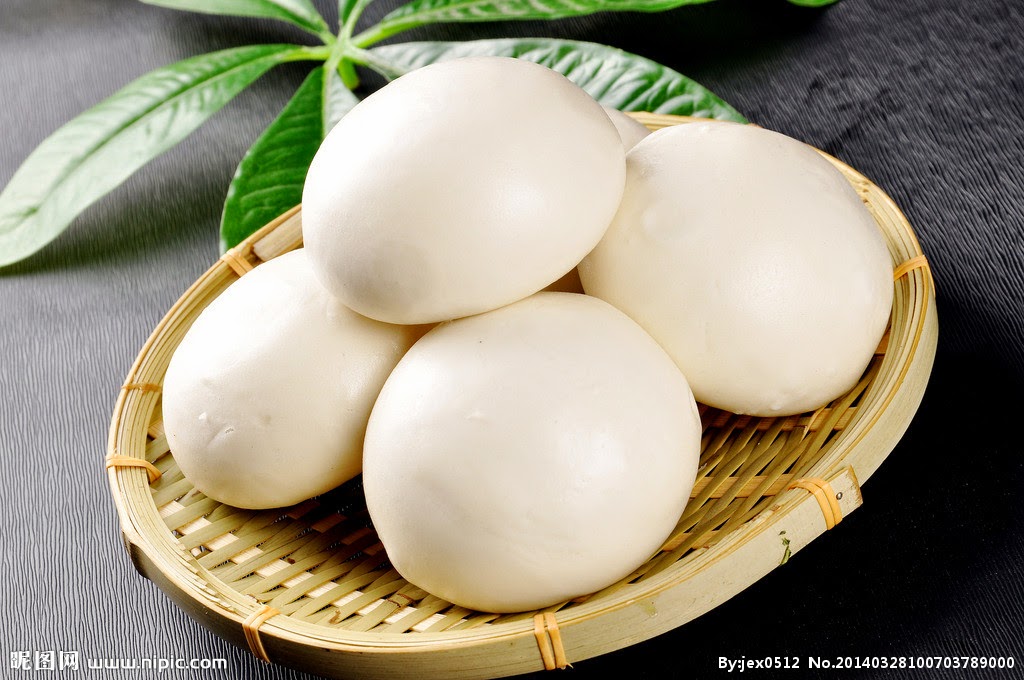Chinese cuisine is a rich culture. Its richness has been bred in the vast terrain of China, along with the long history of about five thousand
years. China has various food resources and people in different regions have different eating habits. I can only briefly introduce
the culture here, hoping to give you a general idea about Chinese cuisine.
Do Chinese Eat Everything?
It says that Chinese eat everything. I
would say that it is nearly a rumor because most people do not eat insects or
kinds of animals. But it does reflect an important feature of Chinese cuisine —
the richness in its materials. Compared to German cuisine according to my
knowledge, Chinese cuisine has a much more variety in the materials it has.
Here in Chemnitz, I usually see a few kinds of vegetables with green leaves.
But in China, we have many kinds of vegetables with green leaves with their own
names. Some of them I can't even tell their names, especially those from remote
areas. As for meat, we eat similarly to European people, like pork, beef,
chicken, fish, lamb, etc, except the flesh of dogs. Those dogs belong to one
particular type and are raised specially for cooking.
(Vegetables for hot pot)
However, there are some
people who dare to try everything they can. Chinese tradition thinks that some things in the nature contain much nutrition and eating them can provide people more energy than other food. There are four expensive food in China, i.e. bird's nest soup, shark fin, abalone, swim bladder. For example, traditional Chinese medicine believes that bird's nest soup (a particular type of swallow) can provide people qi and xue (two terms of TCM), and many other good substances. But now the consumption of some of them is controversial, especially shark fin. Their consumption hurts the animals and breaks the balance of nature.
(Bird's nest)
(Bird's nest soup)
Cooking Methods
Chinese cuisine has many methods of
cooking: frying, boiling, steaming, braising, etc. Chinese language has much
more specific words to differentiate the nuances of those techniques of
cooking. Like traditional Chinese medicine, Chinese cuisine is empiricism. The recipes sometimes may not have specific and exact instructions on temperature, time, or the measure of seasoning. These words are
vital in recipe because each one of them indicates a method of cooking. I have taken some methods from Wikipedia as examples.
(Some Chinese methods of cooking)
(Stir frying)
Main Food
A normal meal is grain with dishes of chocked
and cooked food. Most parts of China have rice as main food. We also have kinds
of food made from rice, such as vermicelli, a food more thinner than noodles.
We often eat noodles, which is made from wheat flour, especially for breakfast.
Some north parts of China eat foods made from flour as main food, like Mantou
(steamed bread) and pancakes.
(Rice)
(Noodles)
(Mantou)
(Pancakes)
Chinese Dishes
Chinese cuisine emphasizes on the
color, smell, and flavor of food. The color and smell can stimulate people’s
appetite.
(Red-braised pork)
The skill of cutting up the food materials is quite important for the
look of food. There are cooks who specialize in cutting. Dishes for formal
banquet usually have good look. The finely cut food are usually exquisitely put
in the dish.
(Cutting tools)
(Cutting)
(A banquet dish of cut Toufu)
Eight Schools of Chinese Cuisine
Chinese food varies with the regions.
People in different region like different flavor of the dishes, and have
different eating habits. There are mainly eight schools of Chinese cuisine: Lu,
Huaiyang, Yue, Chuan, Zhe, Min, Xiang, Hui.
(Map of Chinese Food)
Cuisine of different regions can have quite different styles. In southwest part of China, people eat very spicy hot food. The southwest regions of China are usually thought to be Sichuan, Chongqing, Yunnan, Guizhou. Chuan cuisine is the cuisine of Sichuan and is a representative of southwest cuisine. It is famous for its hot flavor which makes your tongue feel tingly.
(Chuan)
Yue cuisine may be the most famous one overseas. It has been developed in Canton area, including Guangdong and Hongkong. Yue cuisine is famous for that it is good for people’s health. It emphasizes on reserving the original flavor of food material, so it adds the least seasoning in the food compared to other school. You can feel the delicious taste of the food material that is given by nature. Having such food won't give much burden to human body.
(Yue)
The Cantonese like to make soup taking vegetables, fruits, meat, and sometimes Chinese herbs as ingredients. This may mostly be due to the wet and hot climate in Canton area. People usually let the soup boiled for a long time so that the soup contains much essence of the ingredients. They will feel better in the wet and hot weather if they have such soup.
Canton cuisine is also famous for its dim sum, which is food prepared in small size or for individual portions. Canton people have the tradition of having tea and desserts in the morning. This tradition is called Yum Cha, as "having tea" in English. Old people can do it everyday and young people will join their family on weekends. Yum Cha is not just having tea, but also different kinds of Dim Sum. People often chat while having tea for a whole morning.
(Dim sum)
Chinese cuisine is really rich and complicated since Chinese people have always been regarding food as a very important thing since ancient times. There is a saying that "hunger breeds discontentment". I can only introduce a little part of it here. If you want to know more about Chinese food, I trongly recommend you to watch this series of documentary film. It will stimulate your appetite by showing foods in different regions of China, and you will see the history of those foods and the living conditions and customs of people in China.
Videos:
A Bite of China
https://www.youtube.com/watch?v=06gvRlOfUv0&list=PLYOTfstAG_IPjyEeT472GEJzafYmBiA3w




















Keine Kommentare:
Kommentar veröffentlichen